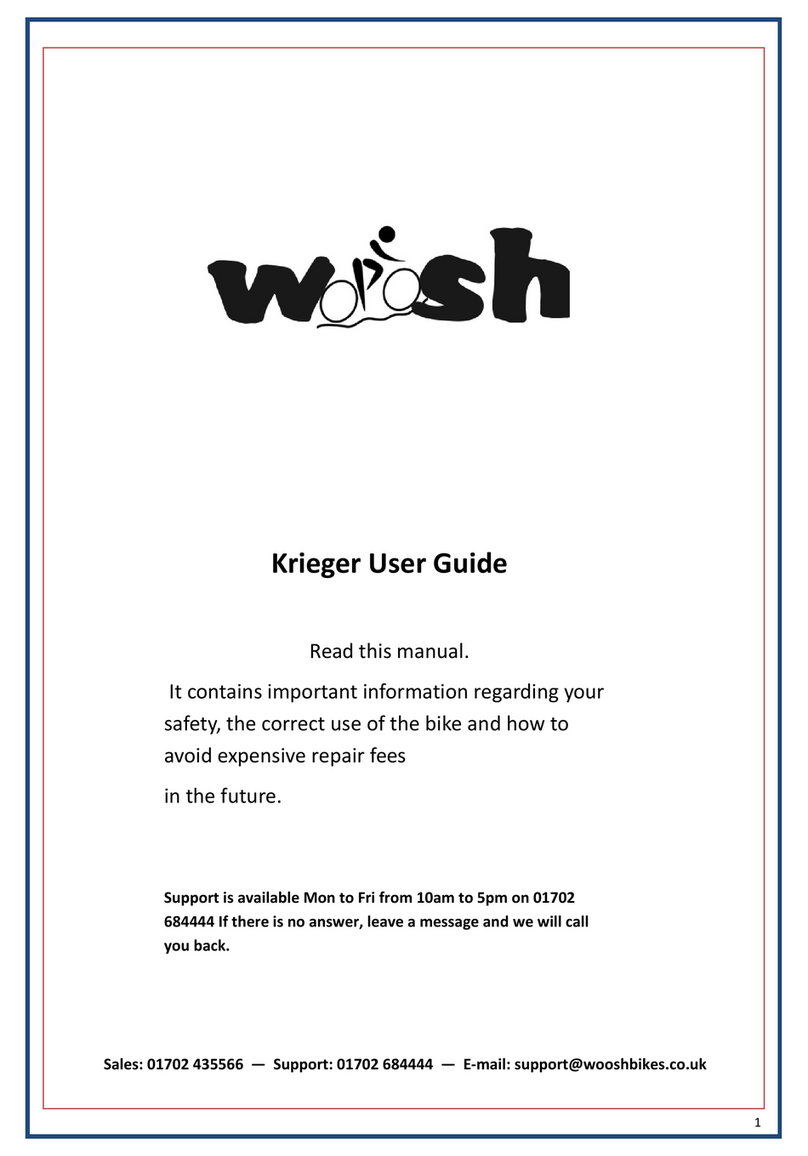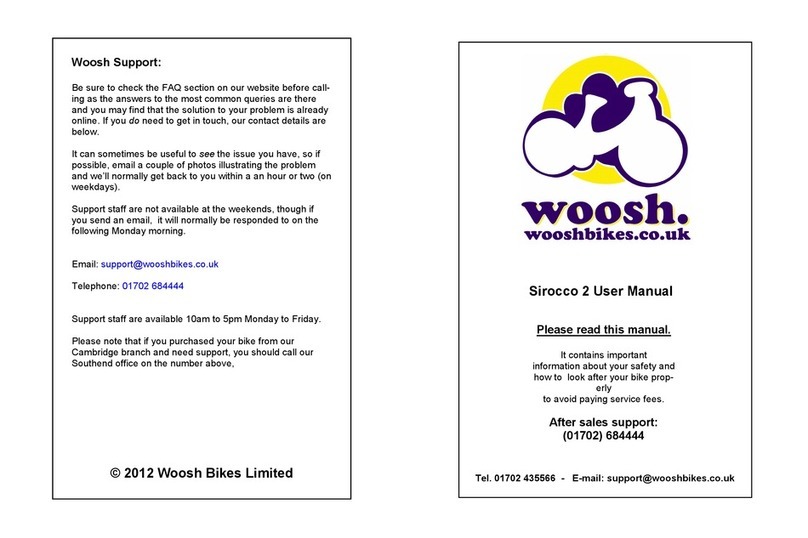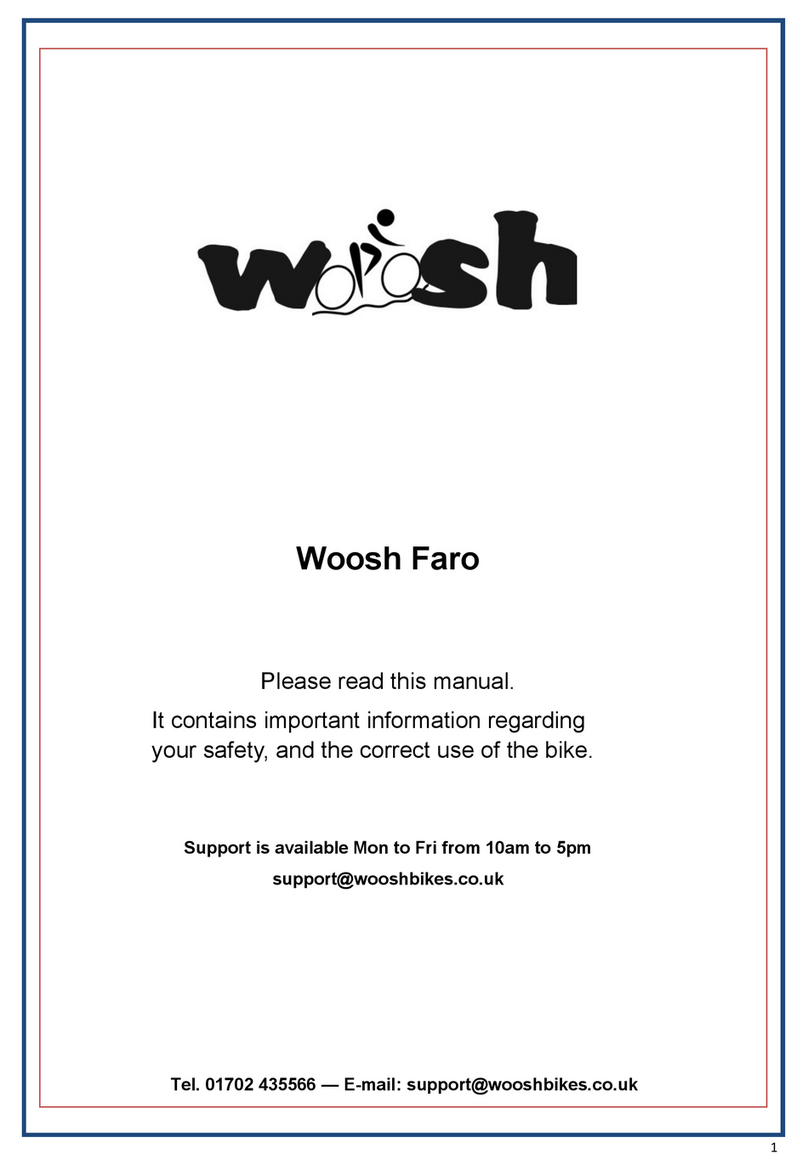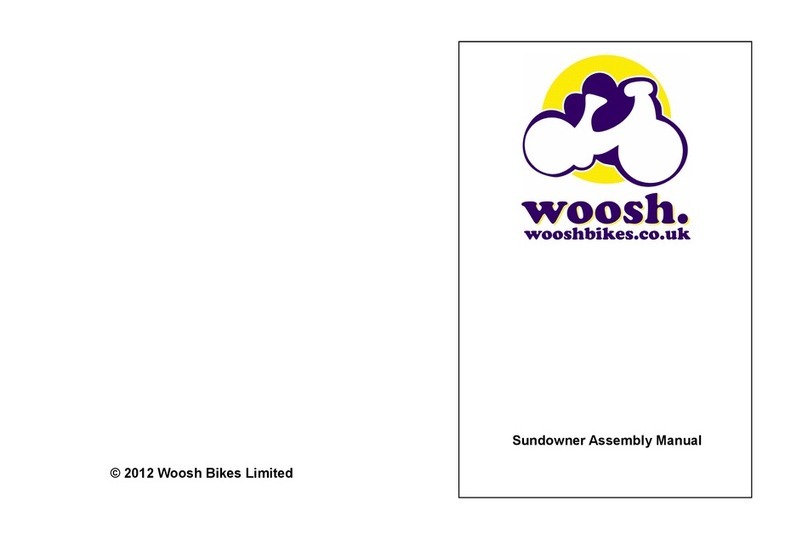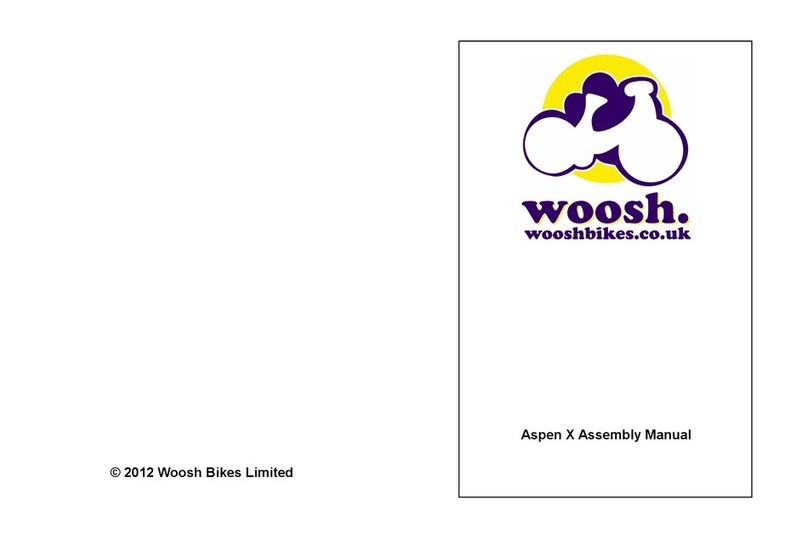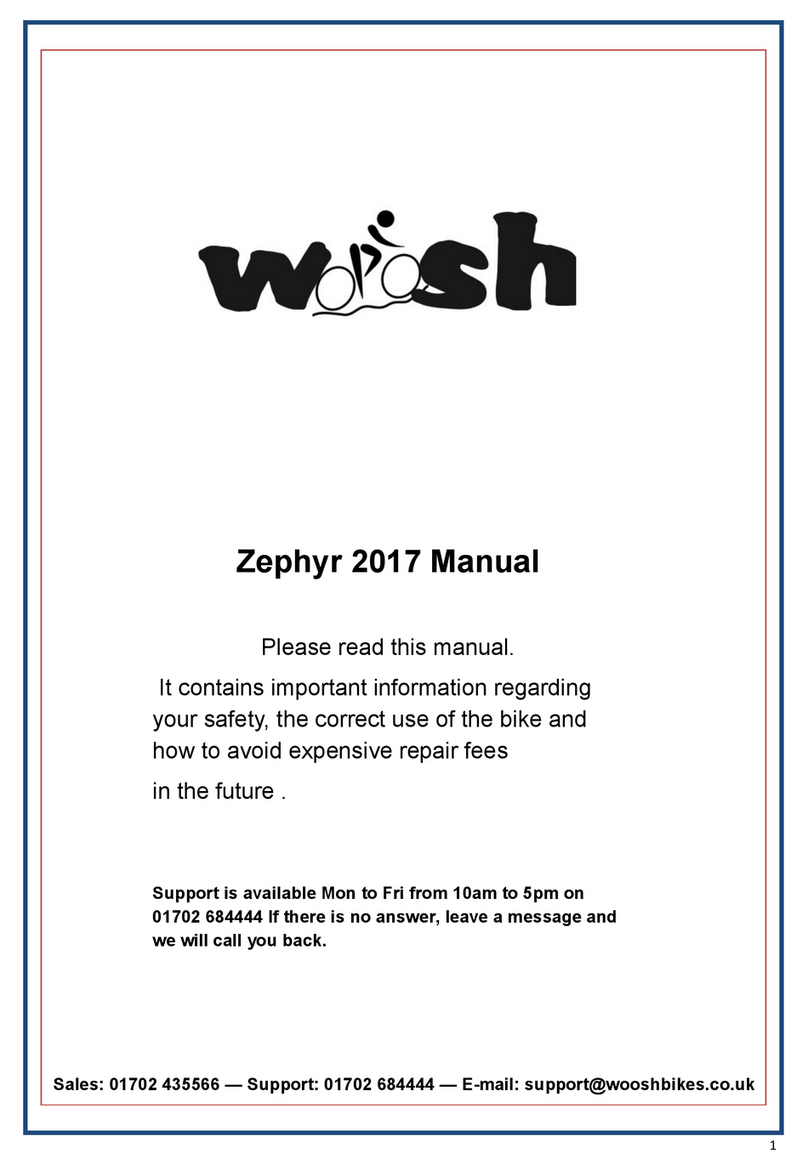
6
Handlebars:
Next, set the handlebar stem at the desired height and then tighten the Allen bolt (indicated in the pho-
to below-left) to secure the stem in position. You will need to push the bar into it’s forward-most position
to allow access to the bolt. Ensure that the handlebars line up correctly with the front wheel and then tight-
en the bolt with a 6mm Allen key. It is critical that this bolt is properly tightened. If in doubt about any as-
pects of setting up your bike, seek the help of your local bike shop or other suitable professional.
Warning:
It is critical to ensure that the handlebars are properly secured. If they were to rotate or otherwise move
unexpectedly during use, it could result in an accident and/or serious injury. If you have any doubts re-
garding the correct configuration of this part (or any other part of the bike), you should take your bike along
to your nearest bike shop and have them prepare it for you at your own cost.
Once the stem has been secured, you can now fine tune the positioning of the handlebars. The handle-
bars can be adjusted in two ways. They bar itself can be rotated within the clamp, and the whole assem-
bly can be rotated upwards/towards the rider. You should adjust the height first. Once you have rotated
the stem to the desired height, it will then be necessary to rotate the bar to the correct position. When you
are happy with the position of the handlebars, close the clamp, there should be some resistance when
closing the clamp, if there isn’t much resistance, it must be adjusted before you attempt to ride the bike.
If the clamp isn’t offering much resistance when closing, you must tighten the Allen bolt on the underside
of the clamp as shown below. If you are not able to make these kinds of adjustments yourself, you should
have your local bike shop prepare your bike for you. They will obviously charge you for this service.
You may nd that the modular cables are un-
plugged, this is to avoid them geng stretched/
damaged in transit. When re-aaching them,
match the colours and ensure that the arrows on
the connectors line up before pushing them rm-
ly together—see below.




